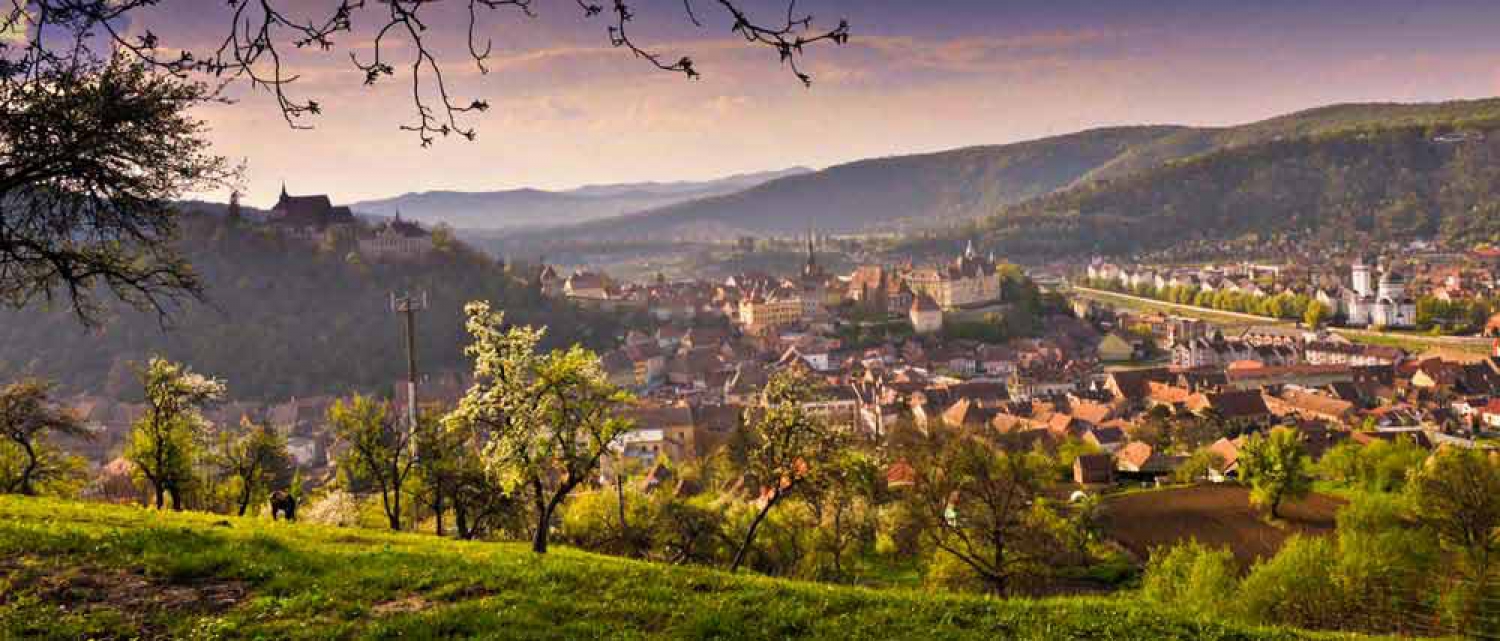The town rapidly developed into a powerful economic and commercial center. Its many craftsmen and tradesmen fortified it with 14 towers and five artillery bastions against Ottoman invasions. Each guild had to defend during attacks their own tower, named after their craftsmanship, like the Blacksmiths’ Tower or the Goldsmiths’ Tower.
The local importance of the guild was also reflected by the dimensions and endowment of the towers. Even the local council members were in charge of defending the Clock Tower, which guarded one of the main access routes to the Upper Town.
During the violent 15th century, Sighisoara became the second political center of Transylvania, after Sibiu. Its Romanian name, Sighisoara, was first mentioned back then by Prince Vlad Dracul, the father of Vlad the Impaler. While we know for sure that the famous Vlad was born there, there is no historical proof regarding the house of his birth. Don’t get fooled by the local ‘house of Dracula’ attraction.
he Upper Town, strictly separated from the Lower Town in terms of privileges and defense during the medieval centuries, is today listed as a UNESCO Heritage Site.
You can find below a list of the Upper Town places not to miss when you visit Sighisoara.
The Clock Tower
Nine towers still exist of the original 14, but most of them are closed for visitors. The Clock Tower, one of the symbols of Sighisoara, guards the citadel entry. Going all the way up to the top is a must. The highest and the most imposing tower hosted until 1556 the reunions of the Town Council. Due to its dimensions, the Clock Tower offers an excellent view of the historical center and the rest of Sighisoara.
The tower is today the History Museum. Each room has a thematic exhibition, starting from ancient times. You can even see the mechanism of the clock and the figurines that announce the exact hour every single day for the past hundreds of years.
The City Square
Next, you can admire the historical buildings from the small squares in the Upper Town where most of the commercial activity took place in the past. You can also visit the Church of the Dominican Monastery, first mentioned in 1298, the Museum of Weapons, admire the Venetian House, and the Stag House among the many that belonged to the elites. You’re only a few meters away from medieval towers like the Tailors’ Tower or the Cobblers’ Tower.
The Scholars’ Stairs
The Scholars’ Stairs are a special attraction, dating since 1642. This stairs passage was built to protect school children during wintertime, on their walk from the City Square to the School on the Hill. After the 175 steps, you’ll reach the most peaceful part of medieval Sighisoara.
The old school building is right next to the Church on the Hill, the Ropemakers’ Tower, and the Evangelical Cemetery. Don’t miss a tour of the church, one of the most important Gothic constructions in Transylvania, and a walk in the centuries-old Evangelical Cemetery. Its caretaker lives next to the church, in the Ropemakers’ Tower, the only inhabited tower of the remaining nine. From the cemetery, you can go back down on a small paved street without taking the stairs again.
Sighisoara offers many attractions besides its historical monuments. Its old colorful houses, its crowded streets with tourists and artists during the annual Medieval Festival of Sighisoara make Sighisoara a great place to visit in Romania.
The city is also an excellent starting point to discover the Transylvanian Saxons’ heritage. This is one of the special elements that make this region a world-unique destination.
Sighișoara
Sighisoara was attested at the end of the 13th century under the German name of Schespurch. It was one of the seven fortified citadels the German colonists, known as the Transylvanian Saxons, built in this region starting with the 12th century.



